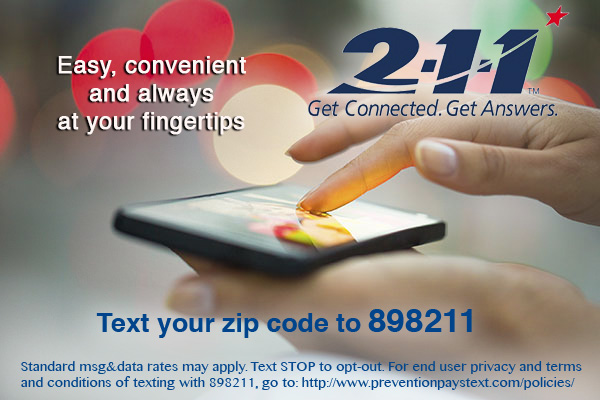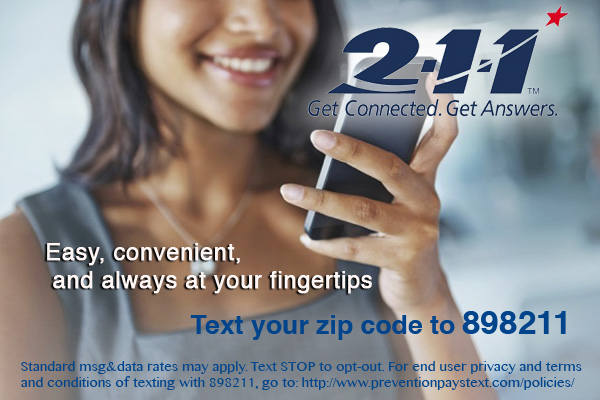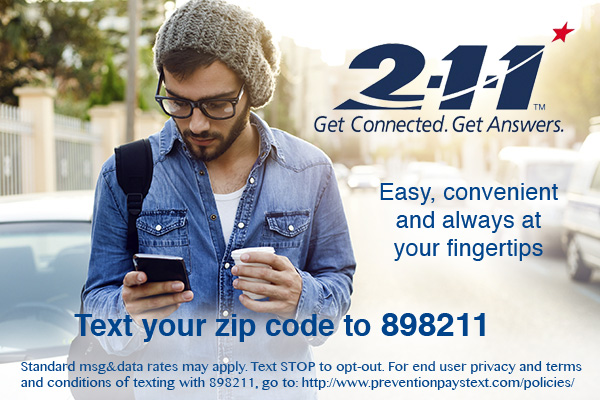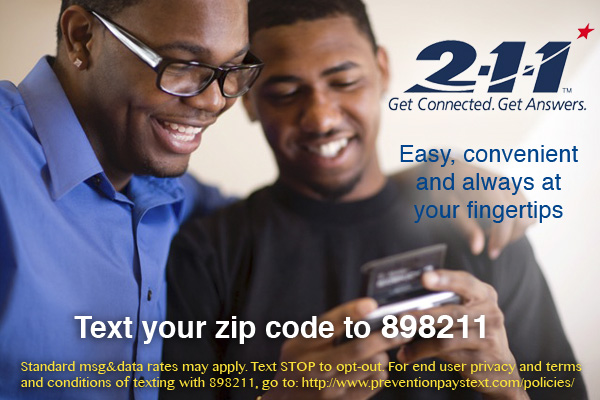In early 2016, IN211 Partnership approached the PreventionPays team with one question, can we share our traffic? We said, when do you want to start?
It's great that 211s can offer their services through more channels than the phone. With 80% of Americans texting more than they make voice calls and email, combined, it's no wonder texting has become the most important communication upgrade for 211 Contact Centers. But what happens when a text isn't answered? 211s in Indiana are working together to ensure that doesn't happen.
PreventionPays Text has lead the way developing an enterprise level website powered by a Tier 1 short code, 898211 aka "TXT211" that enables 211 Contact Centers to respond via live two-way text conversations, to requests from the public for help finding food, shelter, health services, clothing, child care, housing and so much more. How does it work? The model is simple. An end user (individuals, families) can text their 5-digit zip code to the short code, 898211. Then, their text is routed to the 211 that's responsible for calls/texts from that zip code. This model is working extremely well. In fact, United Way 211 in Atlanta (the first 211 in the U.S.) saw their text traffic go from 500 unique encounters in April 2015, to now more than 4,500 request per month! And that number just keeps climbing!
We believe the drastic increase is due to the expanding base of end users. More and more people who grew up texting (gen-y, millennials) are finding themselves entering the stage of their life where they need more social services. A temporary financial setback can be catastrophic without help - losing one's job results in loss of wages, which results in missed payments. What supports are available for them? Who will help them with basic needs like putting food on the table and paying rent? That's where 211 comes in. They are by nature, a help hotline for people who need help, a clearinghouse for information and referrals (I&R).
211s specialize in connecting communities to these vital resources. And they're a filter for all the predatory services like high interest personal loans and payday advances. They maintain a current database of social services and they're a critical safety net for the public - they keep people off the streets with roofs over their heads and a shirt on their backs - literally. Great, right? But what happens when the people needing the help stop using the channel 211 uses to make these connections? "Calling" 211 (as in picking up the phone and dialing 2-1-1) is becoming an increasingly foreign concept, particularly among the next-gen help-seeker that uses their smart phone for just about everything, EXCEPT placing phone calls. Who could've predicted that?! In fact text is the most used function on our phones. By contrast, making calls is 6th on that list. (source: PEW Research)
This is the cold, hard truth that 211 managers are facing, with declining numbers of calls, which grow month over month. Many 211 managers are turning to other channels to boost their numbers. And text has been the most widely used alternative. Why? It's universal. Just about everyone texts. Seniors are now texting 211. According to Pew Research, Americans 55 and under text more than they talk on the phone and email. And it's the 55 and up segment that is fastest growing. 211 can reach all groups regardless of age, gender, ethnicity. A simple, easy way to get vital information.
The short code, 898211 is provisioned with all carriers in the United States. In fact, it's the only Tier 1 short code provisioned specifically for 211 related communications and now shared by dozens of 211s across the country. Unsure if your 211 is covered? Try it! Text your zip code to 898211! For covered zip codes, you'll get an optin message and simultaneously routed to the closest 211. For zip codes that are not yet covered, you'll get an automated bounce back, "We're sorry we don't understand your text... please only text the zip code/keyword for the program you're trying to reach or dial 211." The system is calibrated to always provide a response even when live help isn't available.
In Indiana, all six 211 sites have successfully launched texting services on 898211 with one additional component - they've agreed to join forces to create a safety net for each other! That means if you live in Indiana, your text will go to the closest 211. If the closest 211 doesn't respond to your text in 5 minutes, the other five sites have agreed to be backup and to cover for each other, in the same ways that they cover each others' phone calls when needed. So, staff at the other sites will get an alert about the unanswered text in their neighbor's queue and then have the option to click the text and respond! Therefore, if specialists are tied up on calls, or they need to schedule an all-staff meeting, the "network" will respond when any of the individual sites cannot. This project is emblematic of where services with an online presence (web-based, SaaS) are going next. Why let a text go unanswered? By working together on the same text service platform, these agencies are tackling a very big issue with a very simple solution. Congratulations, Indiana 211 Partnership for being trailblazers in the I&R sector! It's also important to note, the short code 898211, a dedicated, branded short code for 211 services, is powering these communications. The concept of sharing traffic is only made possible because everyone in the state is texting 898211 and all 211 contact centers are using the same web-based application to respond to those texts. In early 2016, IN211 Partnership approached the PreventionPays team with one question, can we share our traffic? We said, when do you want to start?
Want more info? Are you a 211 seeking texting services for your agency? Text DEMO to 898211 or call us at our office 805.653.6000. You may also email info@preventionpaystext.com
Are you a member of the public and need help? Text your zip code to 898211 or call 211. Want more info about this exciting work? Visit IN211 Partnership or email info@IN211.org
Cheryl Graham, director or United Way 211 Howard County will be sharing about their progress and strategies during a webinar on September 6, you can register here (make sure to select the September 6th option): https://attendee.gotowebinar.com/rt/2726525326567937026
Great news! IN211 developed marketing materials to promote the new service and call to action: "text your zip code to 898211". They have generously offered to share their materials and messages with other 211s. You can view their portfolio here: http://unitedwayhoco.org/get-help/2-1-1united-way-of-howard-county/2-1-1-marketing-materials










